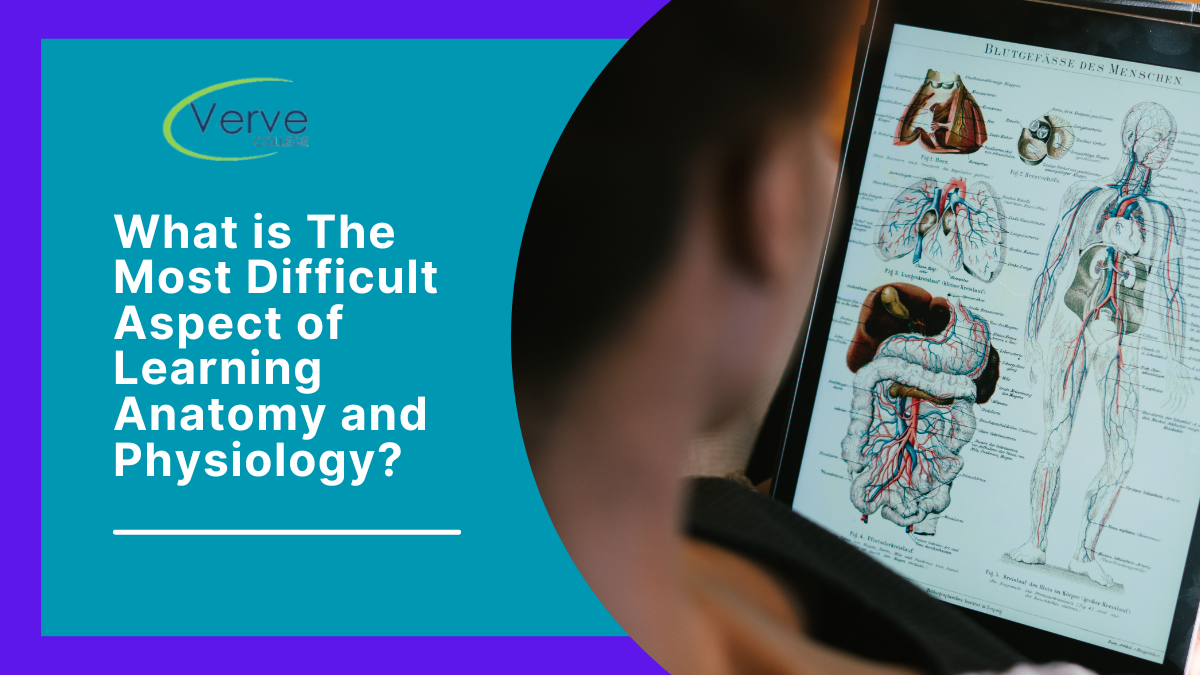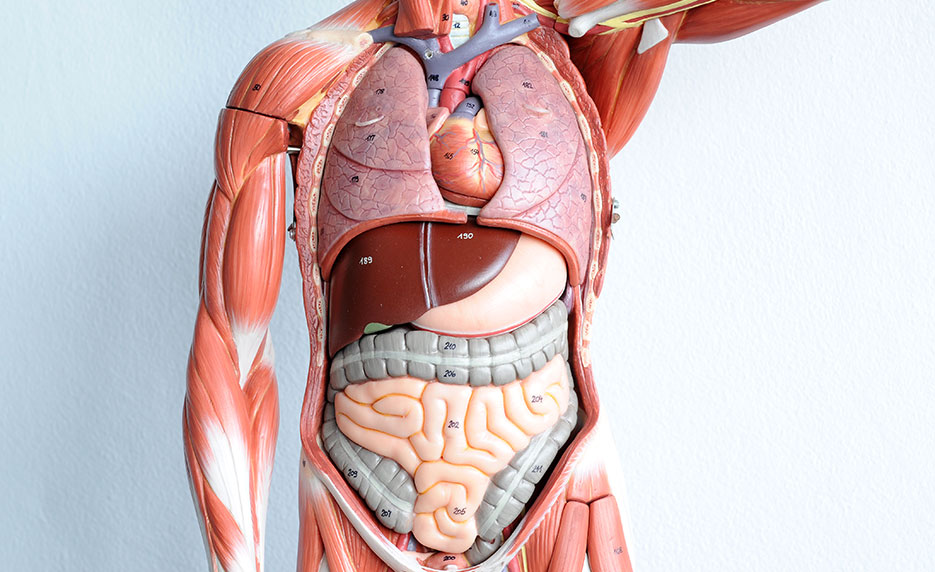
How to Become a Anatomy And Physiology Course: Expert Tips
Are you fascinated by the intricacies of the human body? Do you find yourself captivated by how our organs, muscles, and bones work together seamlessly?
If so, diving into an anatomy and physiology course might be your next big step. This guide is crafted just for you. It will unravel the essential steps to enroll in a course that not only enhances your understanding but also opens doors to exciting career opportunities in healthcare and beyond.
Imagine being the person who can decode the mysteries of the human body, impressing friends and colleagues alike with your knowledge. Ready to explore how you can turn this passion into a rewarding educational pursuit? Keep reading to discover how you can become a part of this fascinating world.

Choosing The Right Course
Explore the world of anatomy and physiology by choosing a course that fits your learning style and goals. Look for courses offering interactive materials and expert support to enhance your understanding. Check for flexible schedules and comprehensive content to ensure an engaging and successful learning experience.
Choosing the right anatomy and physiology course is a pivotal step in your educational journey. With numerous options available, selecting the right one can feel overwhelming. Yet, making an informed choice can significantly impact your learning experience and career prospects.
Accreditation Matters
Accreditation is more than just a stamp of approval. It guarantees that the course meets high educational standards. When a course is accredited, it can open doors to further education and employment opportunities. Imagine completing a course only to find out it lacks recognition. It’s a situation you want to avoid. Always verify the accreditation status of a course before enrolling.
Course Format Options
The format of the course can greatly influence your learning style and convenience. Are you someone who thrives in a traditional classroom setting, or do you prefer the flexibility of online learning? Some courses offer hybrid models, combining online lessons with hands-on lab sessions. Consider your schedule and learning preferences when choosing the format that suits you best.
Instructor Qualifications
The expertise of your instructor can make or break your learning experience. Look for courses taught by professionals with real-world experience in anatomy and physiology. An instructor who actively works in the field can provide valuable insights and practical knowledge. Check their credentials and, if possible, read reviews or testimonials from former students. Choosing the right course isn’t just about ticking boxes. It’s about finding a program that aligns with your aspirations and learning style. What factors are most important to you in a course? Prioritize those as you make your decision.

Essential Study Techniques
Mastering anatomy and physiology requires effective study techniques. Understanding the complex systems of the human body demands more than memorization. You need active engagement with the material. Using proven strategies can enhance your learning experience. This section explores essential study techniques for anatomy and physiology courses.
Active Learning Strategies
Engage with the material actively. Participate in discussions and group studies. Teach concepts to peers. This reinforces understanding. Quiz yourself regularly. Self-testing helps identify areas needing improvement. Use flashcards for key terms and definitions. They are perfect for quick reviews. Apply knowledge to real-life scenarios. This deepens comprehension.
Effective Note-taking
Take notes efficiently. Focus on key points during lectures. Use bullet points for clarity. Summarize information in your own words. This aids retention. Organize notes logically. Divide them by topics or chapters. Highlight important concepts. Use different colors for emphasis. Review notes regularly. This keeps information fresh.
Utilizing Visual Aids
Visual aids enhance understanding. Diagrams and charts simplify complex ideas. Create mind maps for systems and processes. They show connections between concepts. Use videos for dynamic explanations. They provide visual and auditory learning. Engage with interactive models online. These offer hands-on experiences. Visual aids make learning engaging and memorable.
Building A Strong Foundation
Embarking on a journey to master anatomy and physiology requires a sturdy groundwork. Building a strong foundation not only ensures success in your course but also enriches your understanding of the human body. Imagine studying without a solid base; it’s like trying to build a house without a foundation. Your learning experience hinges on grasping the core concepts and integrating them seamlessly.
Key Anatomy Concepts
Anatomy is the map of the human body. Knowing this map is crucial. Start with the basic structures: bones, muscles, and organs. These are your landmarks. Familiarize yourself with their locations and functions. Picture them vividly as you study. Use diagrams and models to reinforce your understanding. This visual approach aids retention and makes complex topics less daunting.
Have you ever noticed how some people easily recall anatomy terms? It’s because they connect them with daily experiences. Think about a workout routine: every exercise engages specific muscles. Relate these movements to anatomical structures. This personal touch turns memorization into comprehension.
Physiology Basics
Physiology explains the magic behind the anatomy. It’s about understanding how those bones, muscles, and organs work together. Focus on fundamental processes like circulation, digestion, and respiration. How does blood circulate? What happens when you breathe? These are the questions to ask.
Consider how your body reacts to different scenarios. Why does your heart race when you’re excited? How does your body cool down after a run? Observing these changes in real life will solidify your grasp on physiology. Use your daily activities as a laboratory to see the theories in action.
Integrating Theory With Practice
The real challenge lies in applying what you learn. Can you see the connection between theory and practice? This step transforms knowledge into skill. Practice actively by engaging in lab work and practical sessions. These experiences bridge the gap between reading and doing.
Imagine dissecting a specimen in the lab. You’re not just looking at parts; you’re understanding their functions. This hands-on approach enhances your learning experience. When theory meets practice, everything clicks into place. Ask yourself, how does this knowledge apply to real-world scenarios?
Engage with your peers and instructors. Discussion fosters deeper understanding. Share your insights and listen to theirs. This collaborative approach enriches your learning journey. You’ll find that your foundation grows stronger with every shared experience.
Exam Preparation Tips
Preparing for exams in an Anatomy and Physiology course can be challenging. A structured approach can help ease the pressure. Focused study and stress management can enhance your performance. Discover effective strategies to prepare well and excel.
Creating A Study Schedule
A study schedule helps organize your time efficiently. Break down your topics into manageable chunks. Allocate specific time for each section. Consistency is key. Stick to your schedule and review regularly. Prioritize difficult topics early in your plan.
Practice Tests
Practice tests are essential for assessing your understanding. They simulate the exam environment. Use them to identify weak areas. Review your mistakes and learn from them. Repeat tests to build confidence. Familiarity with the format boosts your readiness.
Stress Management
Stress can hinder your performance. Practice relaxation techniques like deep breathing. Maintain a balanced lifestyle with healthy meals. Ensure adequate sleep to keep your mind sharp. Regular breaks during study sessions refresh your mind. Stay positive and believe in your abilities.
Leveraging Technology
Explore digital tools to enhance anatomy and physiology learning. Interactive apps and virtual labs offer hands-on experience. Online platforms provide access to expert-led courses and resources. Embrace technology to make complex topics easier to understand.
Leveraging technology has transformed the way we learn anatomy and physiology. You can now access a wealth of resources right at your fingertips, which makes the learning process both efficient and enjoyable. Whether you’re a tech enthusiast or a traditional learner, embracing digital tools can significantly enhance your educational journey.
Online Resources
The internet is a treasure trove of information waiting to be discovered. Websites like Khan Academy and Coursera offer detailed courses on anatomy and physiology. These platforms provide video lectures, quizzes, and interactive content that make complex topics easier to understand. YouTube is another excellent resource for visual learners. Channels dedicated to anatomy offer bite-sized tutorials, which can be incredibly helpful for grasping tricky concepts. Don’t underestimate the power of forums and discussion groups where you can ask questions and share knowledge with fellow learners.
Educational Apps
Smartphones have revolutionized how we access information. Educational apps like Complete Anatomy and Human Anatomy Atlas offer 3D models, quizzes, and interactive features. These apps allow you to explore the human body in ways that traditional textbooks can’t. Even if you’re on the go, these apps ensure you can study anytime, anywhere. Imagine reviewing the skeletal system while waiting in line or brushing up on muscle anatomy during your daily commute. How are you making the most of your idle moments?
Virtual Labs
Virtual labs bring a hands-on experience to your screen. Platforms like Labster offer simulations where you can conduct experiments and explore physiological processes. These virtual labs make learning interactive, which can deepen your understanding of complex systems. Think of them as a playground for your curiosity. You get to experiment without the constraints of a physical lab, making it easier to repeat experiments and learn from mistakes. Virtual labs are a safe space for trial and error, encouraging you to learn actively. By leveraging technology, you’re not just consuming information—you’re interacting with it. This active engagement can make your learning journey more effective and enjoyable. Are you ready to harness the power of technology in your anatomy and physiology course?
Networking And Community
Networking and community are vital for success in anatomy and physiology courses. Building connections helps you share knowledge and gain new insights. Engaging with others fosters a supportive learning environment. This enhances your understanding and retention of complex concepts.
Study Groups
Study groups provide a collaborative learning experience. Joining a group allows you to discuss difficult topics. You can clarify doubts and reinforce your understanding. Group members often bring different perspectives. This enriches your learning journey.
Regular meetings keep you motivated and accountable. They also create opportunities to learn from others’ strengths. Study groups can boost your confidence in the subject.
Professional Associations
Professional associations connect you with experts in the field. They offer resources like workshops and seminars. These events help you stay updated with the latest research. Membership often includes access to journals and publications.
Networking through associations can lead to career opportunities. They provide a platform to meet potential mentors. Engaging with professionals broadens your understanding and horizons.
Online Forums
Online forums offer a space for global interaction. You can ask questions and share insights with peers worldwide. Forums provide diverse perspectives and solutions to common challenges.
Participating in discussions enhances your critical thinking skills. It’s a way to learn beyond textbooks. Regular engagement in forums builds a sense of community. This support network is invaluable for your studies.
Frequently Asked Questions
What Are The Basics Of Anatomy And Physiology?
Anatomy studies body structures, while physiology explores their functions. Understanding these basics is crucial for any medical-related field. They provide foundational knowledge for healthcare, sports science, and related courses. Grasping these concepts helps in understanding how the human body operates, which is essential for effective diagnosis and treatment.
How Can I Choose The Right Course?
Research accredited institutions offering comprehensive courses in anatomy and physiology. Look for programs with experienced instructors and robust resources. Consider online courses for flexibility. Evaluate the course syllabus to ensure it covers essential topics. Reading reviews and testimonials can also provide insights into course quality.
What Qualifications Are Needed For Enrollment?
Most courses require a high school diploma or equivalent. Some advanced programs might need prior knowledge in biology or related sciences. Check specific entry requirements of the institution you are interested in. Preparing beforehand can make the enrollment process smoother.
How Long Does It Take To Complete The Course?
Course durations vary based on the level and institution. Short courses might take a few weeks, while comprehensive programs could last several months. Part-time and online options may offer more flexibility in scheduling. Always check the course details for specific timelines before enrolling.
Conclusion
Embarking on a journey in anatomy and physiology is exciting. This field offers endless learning opportunities. Start with online courses or local classes. Study regularly to build a strong foundation. Practice makes perfect. Engage with fellow learners for support and knowledge sharing.
Stay curious and motivated. Remember, patience is key. You will progress step by step. Keep your goals clear and focus on learning. Over time, your understanding will grow. Embrace the challenge and enjoy the process. Your dedication will lead to success in this rewarding field.




